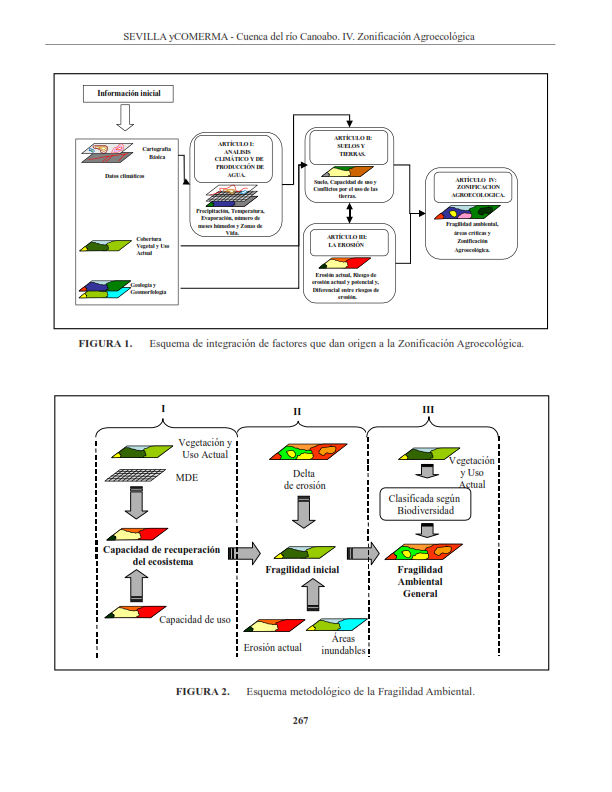Characterization of the river basin Canoabo in the Carabobo State, Venezuela. IV. Agroecological zoning
Abstract
The Canoabo watershed fulfills a double purpose. It produces water for several communities down the valley, but also supports mostly agricultural activities of 6 500 people. Previous studies indicated by the authors on its climate, erosion, and soils allow now to develop agro-ecological zoning, the basis of better land ordering. With this purpose, it was carried out an analysis of its environmental fragility, the separation of critical areas for water and sediment production, and finally the classification into areas to be protected, to be reclaimed and those to be used in more intensive agriculture. Results showed that nearly 50% of the watershed should be protected with rather restrictive legislation to guarantee water and other environmental services. Around 15% require reclamation mostly from severe and moderate erosion before thinking in other uses. Another 20% should have protective land uses, to be developed, like forestry, agroforestry and silvopastoral. Finally, only 5%, in the valley, is recommended for more intensive agricultural uses
Downloads
References
• EDELCA. 2003a. Estudio Plan Maestro de la Cuenca del río Caroní. Evaluación Ambiental, Agrícola y Forestal de las Tierras (FAO). Caracas Venezuela. 77 p.
• Lores, C. 2006. Caracterización de la Cobertura Vegetal y el Uso Actual de la Cuenca del río Canoabo. Informe técnico. PEQUIVEN. Morón. 40 p.
• Pineda, C., D. Machado, J. Ochoa y J. Viloria. 2004. Evaluación Ambiental y Agrícola de Tierras de la Cuenca Alta del río Guárico con Fines de Producción Sostenible de Agua. Manejo Integral de la Cuenca Alta del río Guárico, Núcleo de Investigación y Excelencia. Proyecto Iniciativa Científica Milenio. Informe técnico. 240 p.
• Sevilla, V., J. Comerma y O. Silva. 2008a. Caracterización de la cuenca del río Canoabo. I Análisis Climático y de Producción de agua. Agronomía Trop. 59(1):33-44.
• Sevilla, V. y J. Comerma. 2008b. Caracterización de la cuenca del río Canoabo. II. Suelos y Tierras. Agronomía Trop. 59(2):149-160.
• Sevilla, V. y J. Comerma. 2008c. Caracterización de la cuenca del río Canoabo en el estado Carabobo, Venezuela. III. La erosión de los suelos. Agronomía Trop. 59(2):249-264.





